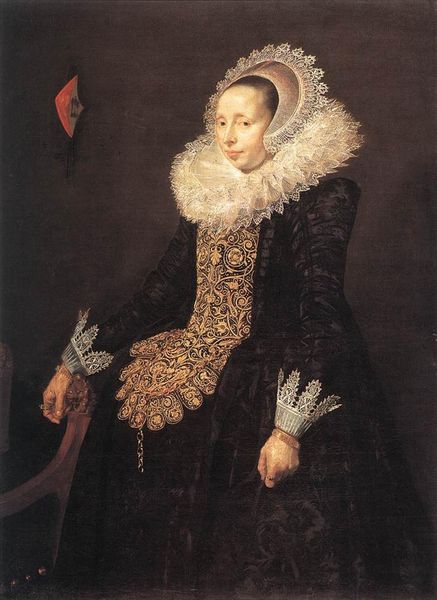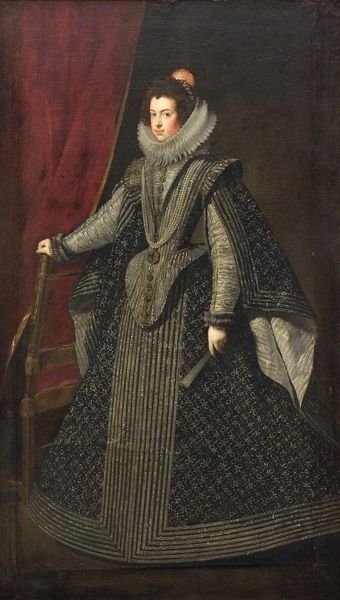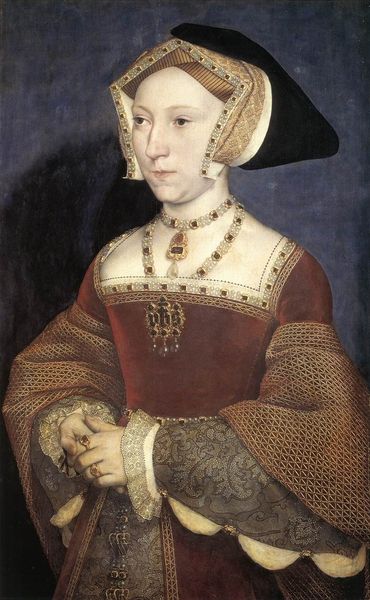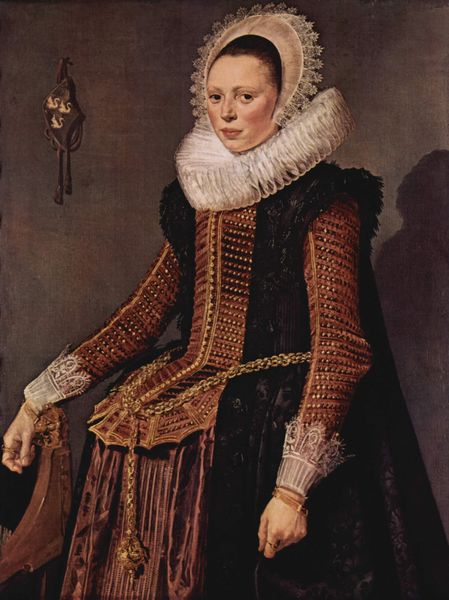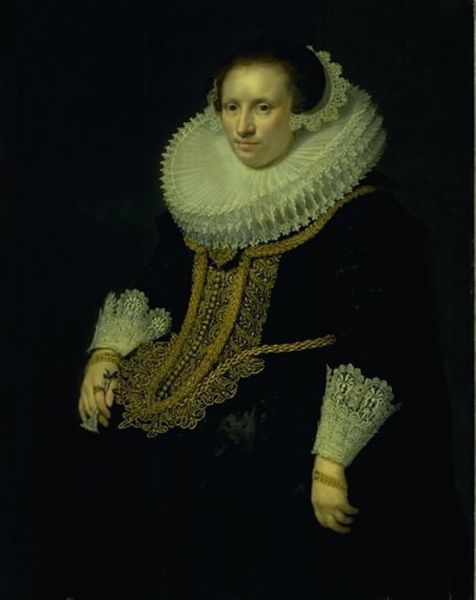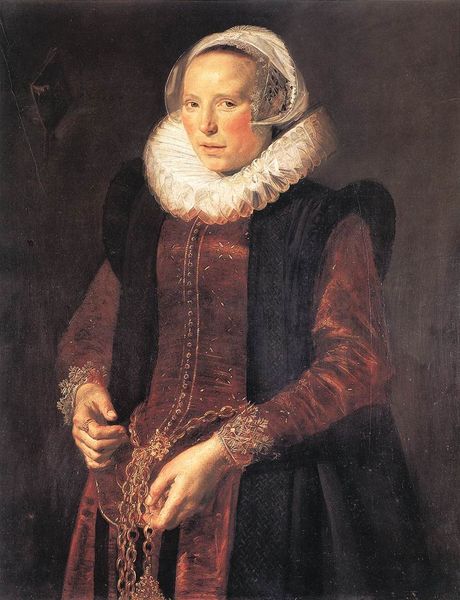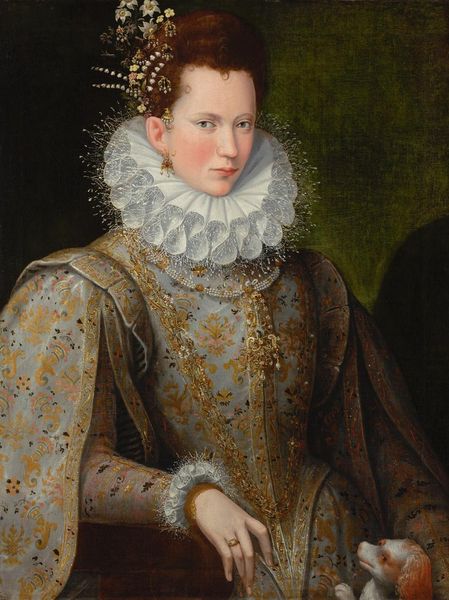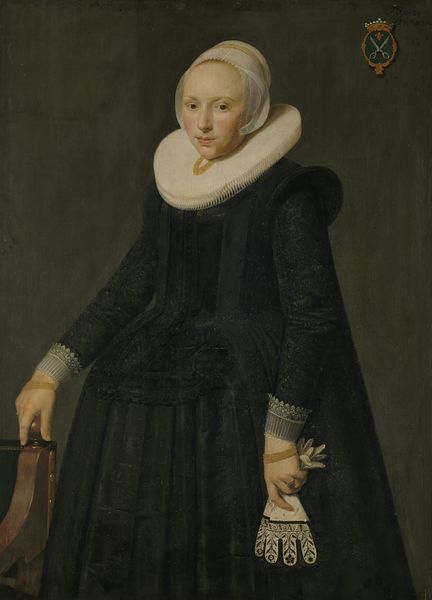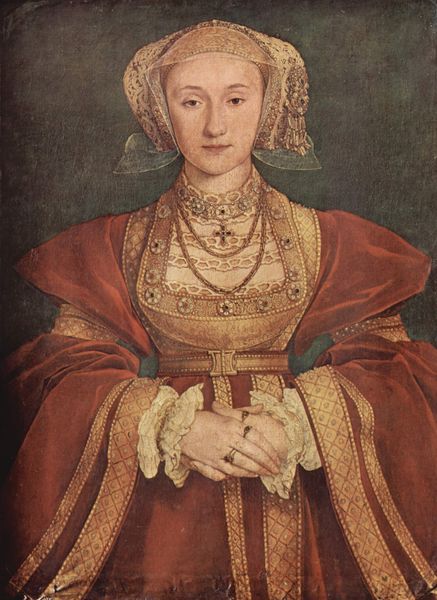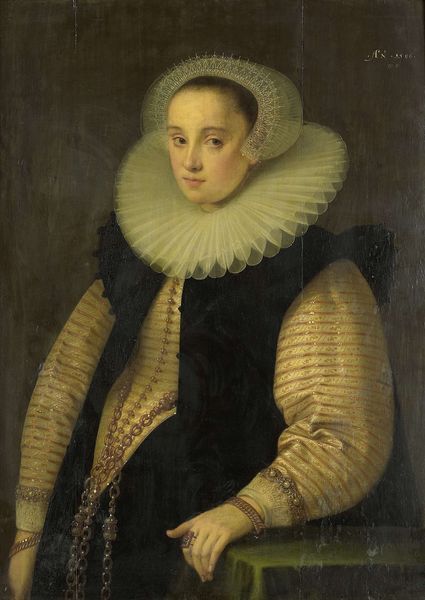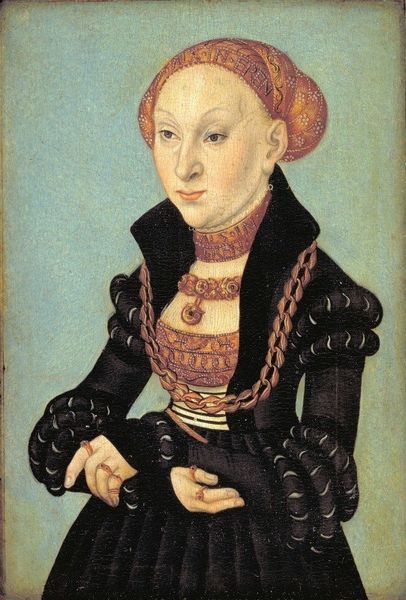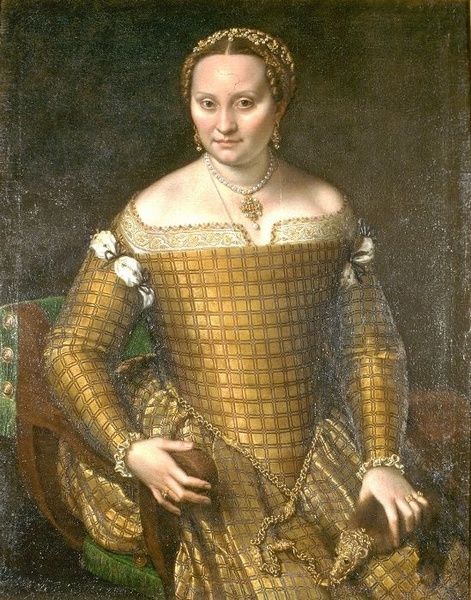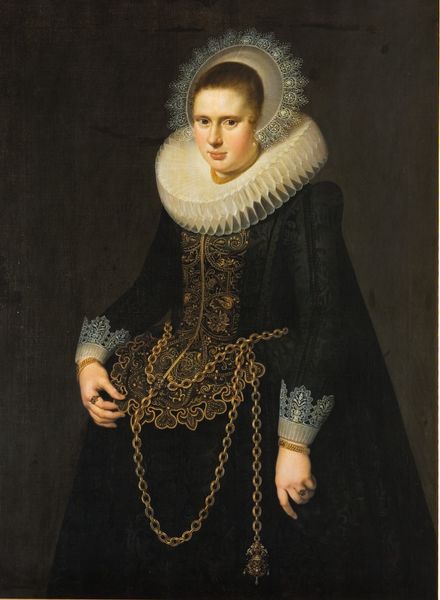
painting, oil-paint
#
portrait
#
baroque
#
dutch-golden-age
#
painting
#
oil-paint
#
figuration
Dimensions: 123.8 x 98.3 cm
Copyright: Public domain
Curator: Here we have Frans Hals' "Portrait of Aletta Hanemans," painted in 1625. Note how Hals uses oil on canvas to capture Aletta’s likeness in the Dutch Golden Age style. Editor: Immediately, I’m struck by the subject's intense gaze and what seems to be her calculated composure. It’s hard to believe someone could appear so poised amidst such elaborate, confining garments. Curator: Precisely! Consider the artist's masterful brushstrokes that give a lifelike quality to Aletta’s features and the way her black dress contrasts beautifully with the complex ruff collar. This creates depth and brings forth a stunning chiaroscuro effect in an otherwise stark setting. Editor: Yes, the formal composition certainly speaks of status and privilege, typical of portraiture of the time. It also strikes me that her almost severe look emphasizes that social class was reinforced by constraints of gender and family identity; this portrait becomes a social document beyond its aesthetic appeal. What might this image tell us about women and power during this period? Curator: The attention to detail is also phenomenal. Notice the subtle interplay of light on the pearl details, each strategically placed for optimum visual interest. The formal attire is more than just clothing, isn't it? It reflects her identity. Editor: Agreed, and beyond mere display of wealth, the portrait may represent the aspirations and restrictions defining women’s lives during this historical era. The rooster symbol might reference a societal association for the household and social roles for women at the time. Curator: Absolutely. The geometric construction reinforces not just aesthetic appeal but also helps underline the virtues of the sitter. I see it as an exemplary piece of portraiture within the Golden Age—an important study in form. Editor: And for me, viewing this work is a conversation with both Dutch society of the 17th century and with current ongoing dialog about how we are affected and perceived in contemporary power structures today. Curator: An exquisite conclusion indeed. These reflections, both ours and hopefully those of our audience, deepen the experience and foster an appreciation for Hals' artistic choices.
Comments
No comments
Be the first to comment and join the conversation on the ultimate creative platform.
